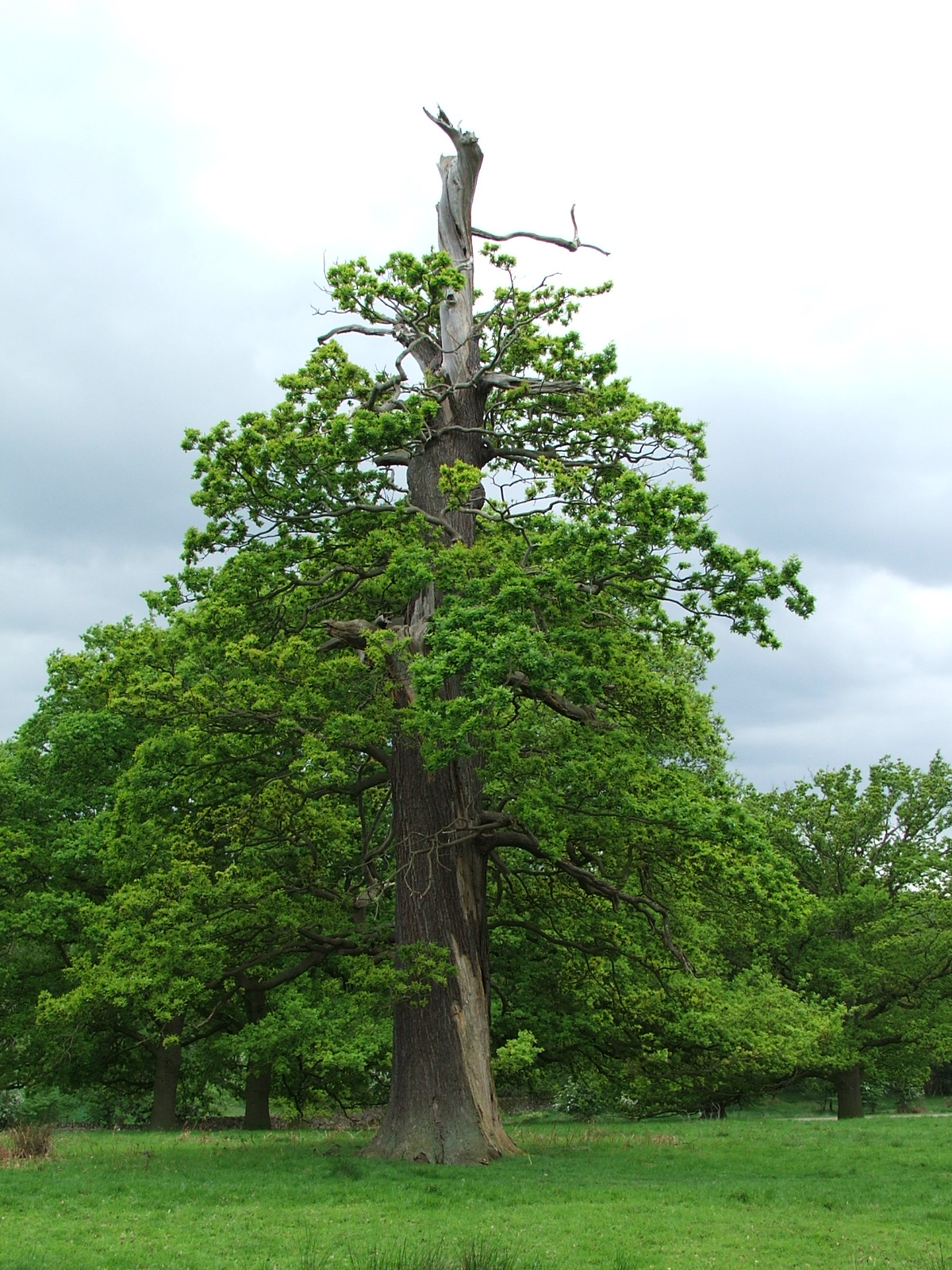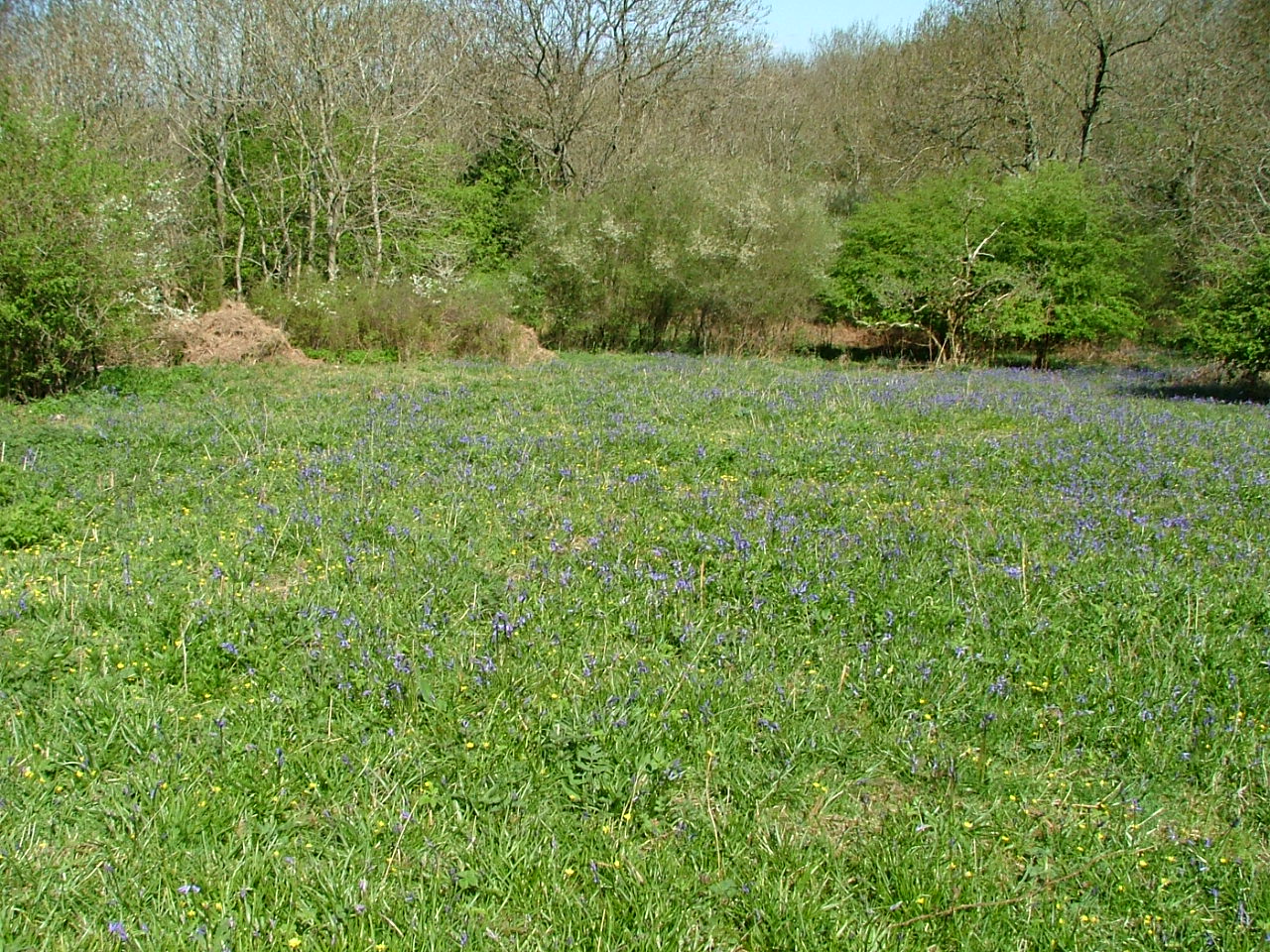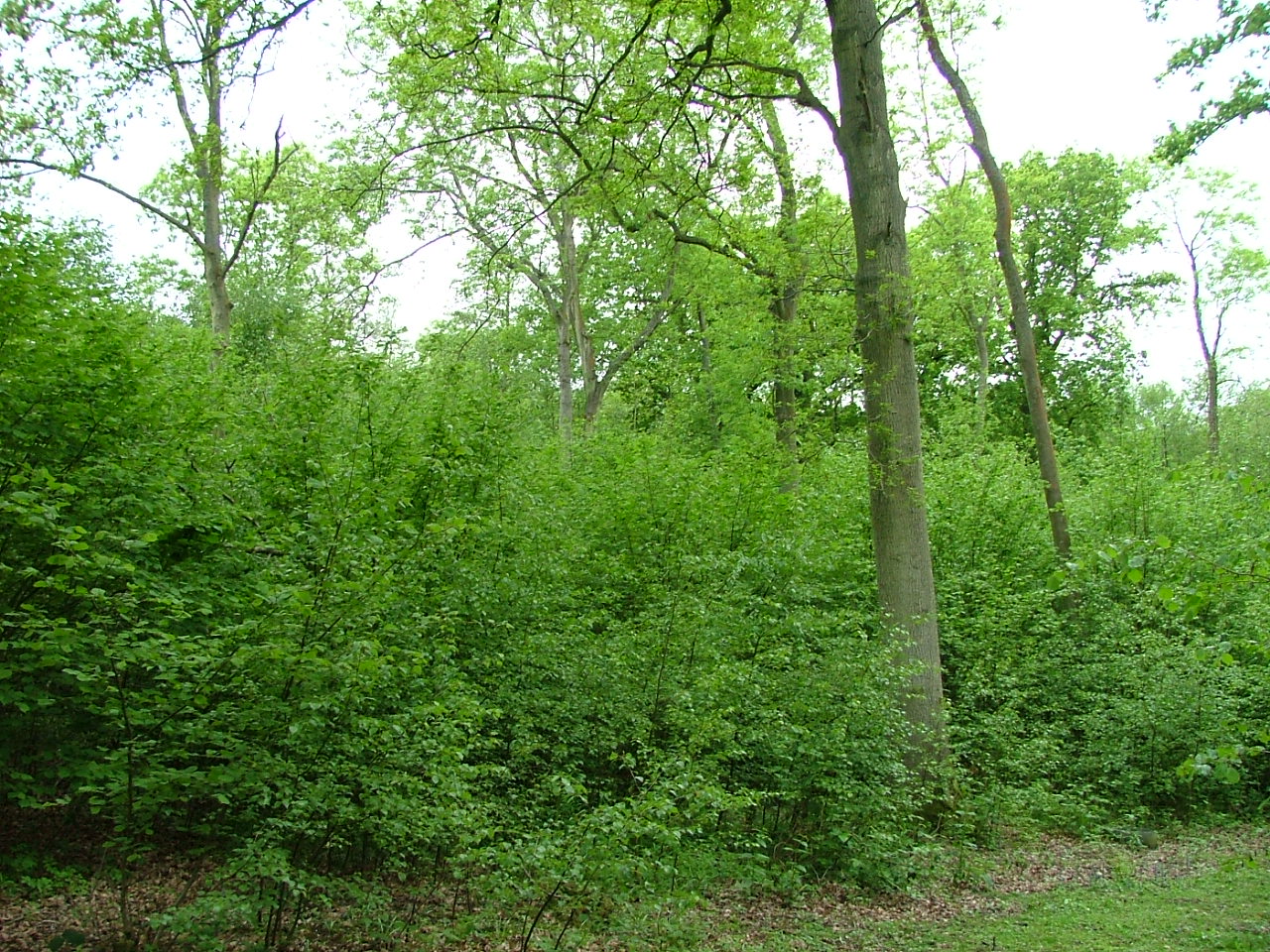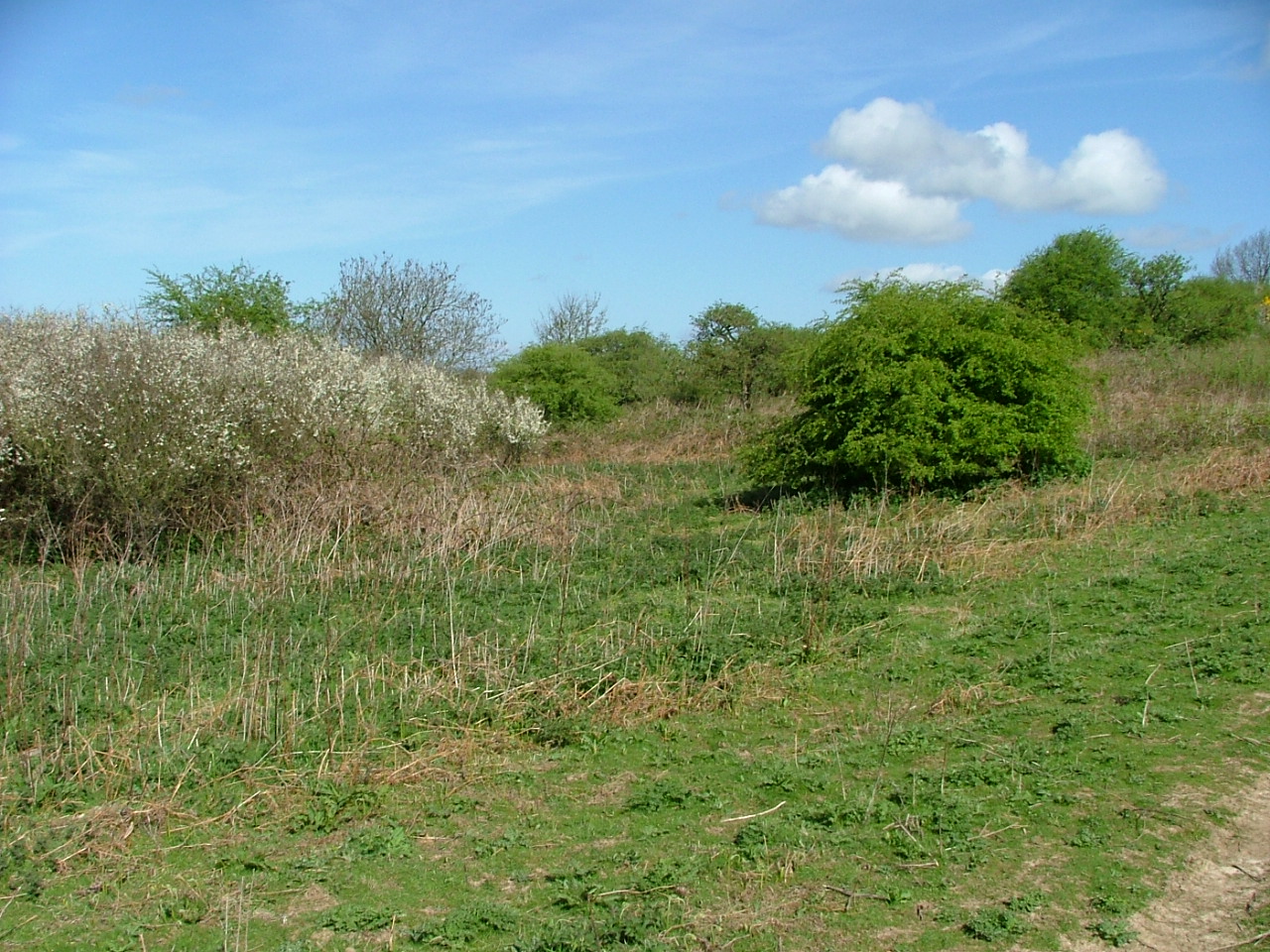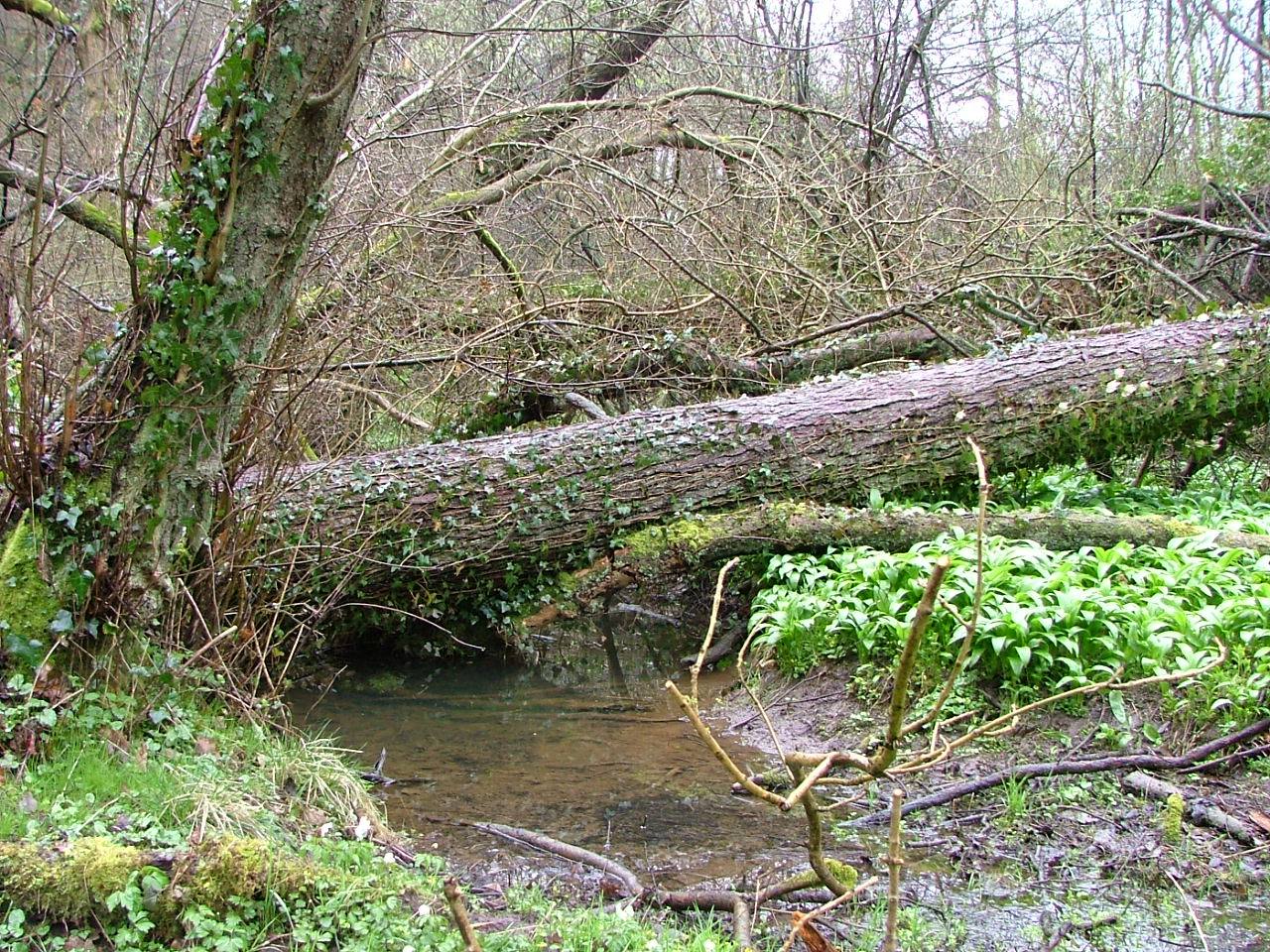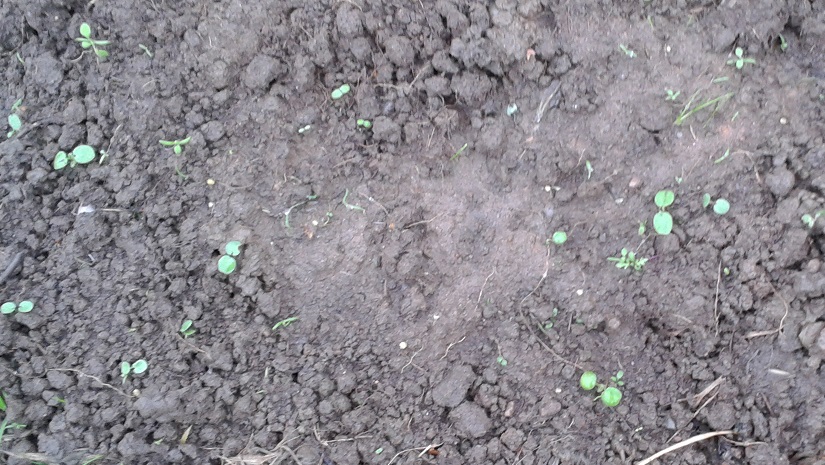Woodland Habitat Features
Each species requires a specific range of features in a wood in order to thrive. In some cases these features may be present but within a wider wooded landscape. Species can suffer from a decline in the scale and quality of the features they need, often because woodland management has stopped or changed. Some species need several features close together and providing this can be a challenge.
Creating mosaics of features within a wood or across a number of adjacent woods, particularly if each is small, is an important means of providing for the range of relevant species.
Features that are of particular value to various woodland species:
Mature and Veteran trees
Veteran trees display attributes associated with late maturity such as large trunk girth, trunk hollowing, rot holes, heart rot, standing dead wood, significant crown die-back (e.g. stag-headed) and vigorous epicormic growth (a stage called retrenchment). Diversity within the veteran tree population is important (e.g. species, form, age, and situation). Their presence is a key indication that there is likely to have been continuity of management at a site over hundreds of years. This has often included grazing animals, domestic livestock or deer, and therefore there may well be no ancient woodland indicator species within the ground flora, rather grassland and patchy scrub. An appropriate survey, may, however, reveal fungi and invertebrates that are indicators of continuity of decaying wood habitat. Veteran trees are often indicators of old field and ownership boundaries and can still be found hidden in recent woodland and within conifer plantations, and may need ‘rescuing’ from these situations, through mechanisms such as halo thinning. Every tree is an individual, providing a precise micro-habitat for a wide range of species and will require bespoke management. Veteran trees are particularly important for wood-recycling fungi and specialist invertebrates.
Open space within the wood including glades, rides and woodland edge
Open areas within woodlands provide a sheltered, warm environment, which is important for many species, especially plants and invertebrates. They also allow light to reach the woodland floor and promote the development of new growth. The interface between these open areas and the shrub and canopy is important for a wide range of species including invertebrates, plants, birds and for fungal fruiting. The importance of this ‘ecotone’ is the complexity and continuity, with short vegetation gradually grading into tall herbs and grasses, then into scrub and then to woodland. Low hanging boughs, dead wood, twigs and leaves, the ‘untidy elements’ are all components of this.
.jpg)
Full shade and high humidity
This is a feature of closed canopy woodlands and is important for creating suitable conditions for species associated with soil and the litter layer, as well as tree trunk and roots and fallen and standing deadwood. Some bats also use this type of habitat.
Understorey
This adds structure to high forest, formed by trees and shrubs beneath the canopy. It includes younger individuals of the dominant canopy species, small tree species, saplings and trees which have developed a shrub form as a result of coppicing or heavy browsing. A number of priority bird species are associated with the understorey layer. Taller trees emerging from the understorey can form a sub-canopy layer, adding structure to the woodland and providing feeding and nesting habitat for some birds.
A succession of deadwood of various sizes
Dead wood is an essential component of woodland ecosystems. The deadwood resource includes standing and fallen trees of various sizes, dead branches still attached to living trees, rot holes, heart rot, fallen branches and stumps. Large volume standing and fallen deadwood is particularly valuable for some invertebrates. Standing and fallen deadwood should be left in situ in order to provide an unbroken succession, which is vital for many species. It should be increased where lacking, and kept intact unless a proper risk assessment shows safety to be compromised.
Scrubby vegetation
Scrub often has significant conservation value, particularly where it contains a wide range of shrub species with mixed age range, and a complex three- dimensional structure. This community may be present within clearings and glades and within a well-developed woodland edge with a range of tall herbs and grassland species. Some scrub communities require management to prevent them becoming woodland, others are more stable, controlled by deer or livestock browsing, and need minimal intervention. Scrub can also act as a corridor for species between woodland habitats.
Wetness, such as pools, runnels or damp soils
Wetness and wet features are vital for many woodland species, especially invertebrates, which occupy specific niches, such as deadwood associated with water which provides specialist habitats such as small seepages and log jams in streams. Maintaining wetness and resisting over-tidiness in woods is important to maintain these habitats.
Well developed litter layer
.jpg)
The litter layer includes all small dead plant matter i.e. leaves, bark, twigs, cones, needles and bulky litter such as dead bracken (branches and larger elements are categorized as deadwood). This plant debris decomposes and is incorporated into the upper soil layer. The litter layer varies in thickness and its speed of decomposition depends on season, climate, dead plant matter of various species and soil fertility. In turn, this influences the abundance and activity of invertebrates and fungi which process the dead material and incorporate it into the soils. Many of these invertebrates thrive only in the litter layer. A well-developed, relatively undisturbed litter layer can host a very rich and diverse invertebrate life. The moist, humid conditions provide valuable hibernation sites for amphibians and litter provides an important ‘blanket’ over soils, protecting them from the effects of heavy rainfall and so reducing soil erosion.
Disturbed ground
Disturbed ground provides opportunities for species to germinate and establish, and a warm micro-climate for certain soil invertebrates. The exact juxtaposition of disturbed areas with open ground and other structural types of vegetation is often important. Useful bare ground can be created through small-scale poaching by grazing animals, management operations and wind blow. For example, light grazing around a halo-thinned mature tree within PAWS restoration can suppress grass and scrub re-growth, maintain some bare ground and provide germination sites around the existing tree so aiding the woodland regeneration process. Care should, however, be taken to avoid soil compaction (especially from the movement of machinery), which can severely damage tree root systems.
Clearfell and Open Habitats
.jpg)
Clearfell forestry systems, where whole, sometimes large compartments are felled in one go (see Continuous Cover Forestry section for comparison), can provide temporary open habitats with some low scrubby vegetation, which is suitable for species such as nightjar, woodlark, some woodland ground flora and butterflies. As these areas are encroached by bramble and regenerating trees they can provide habitat for various scrub-loving birds, and invertebrates including butterflies; while young, thicket stages of replanted conifer or birch regeneration can support redpolls and tree pipits. For many species of the earlier, more open stages of clearfell, ensuring that there is continuity of this habitat type available is often important. Forest plans can be designed so that newly felled areas are located close to areas that are beginning to close over. Reducing disturbance e.g. from dogs, can be beneficial for ground nesting birds in recently felled areas.
Hedges
.jpg)
Hedges, often in the form of linear field boundaries, are made up of scrub and trees, and provide vital connectivity in the landscape, linking woods together by providing corridors for a number of species, including bats, dormice, and some birds, invertebrates and plants. However, management such as the timing and frequency of hedge cutting strongly affects their wildlife value. Many hedges are cut annually in the autumn, which not only removes berries and insect larvae (important food resources for birds and other species), but also affects their structure. Species such as willow tit and turtle dove require large (both tall and wide), dense hedgerows. Cutting hedges every three years in late winter enables the hedge to function much better as a habitat and provide a more effective wildlife corridor. Managing hedges to maintain a dense structure, e.g. by gapping up, is also beneficial. Hedgerow trees, where already a feature of the landscape, should be maintained, and new trees planted to replace those that will be lost (e.g. through old age or disease).
